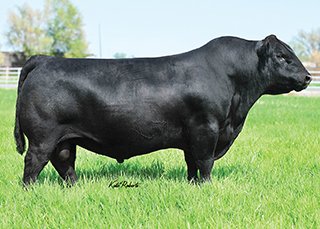Ebenezer
Well-known member
I had experience with some of the original curvebender AI offerings. They were true CE animals but the mature weights were up to or over 1800 pounds even with lesser EPDs and no emphasis on that trait. (Yes, WWs were great.) Our average cow here will generally max out at 1250. There is a historic assumption that BW is linked to growth and growth, of course, is linked to mature size. You can look at theoretical relationships of BW, YW... The thing I am discussing is the typical majority of a breed and not the few outliers of a breed. The curvebenders were great breeders of terminal cattle. What I do wonder is if the longer growth period decreased the feeding performance and marbling of the cattle when either time or weight dictated slaughter. I do not know that.Ebenezer, can you elaborate on this? I have gained quite a bit of insight over the years from your posts, so looking forward to your thoughts.
Back to the 1800 pounders: they did not quit growing as early as normal. We weigh cows most years. I think that there can be a link to skew the gestational length that also monkey's with the age of mature size and weight. In recent years, the Angus breed (at least) has chased low BW and I think the chase has been to an extreme. In the same time the mature size has increased so that research shows them to be one of the bigger breeds, on average. Again: an extreme. You can look up some specific curvebender/low BW& large MW/popular bulls and see that there is such a warp from the historic norm.
In the 70's and part of the 80's there was data given on gestational lengths for AI bulls but like atypical blood types that data is now obscure. l do not want stacked low BW. I have seen data that 2 generations stacked only set the period back an average of 2 to 3 days but you do not sell that: you sell weight after they grow. Too little BW can tell a lot to me from size, survival, vigor, growth, buyer acceptance (fine boned is one issue) and such. I had a well known breeder of "small" tell me that they come with less muscle but add it later. That is not a true statement as all long and short muscles are there from the phase of gestation where those are created or not. The "extra muscle" in the development of the calf is really extra fat. Back in the 80's at the end of the era (BHIA, I think was the acronym) where direct data was used widely and increasing weaning weights were a hard goal the top end heifers were the "keepers". They fell out sooner or could not replicate themselves and part of it was the pressure was selection for WW and the weight was sometimes merely more fat, including fat in their udders.
This is not a discussion set in stone as a smaller BW and lesser growth cattle are available. They generally mature early. The problem I have had with some of that is that the smaller cows will be easy keeping, add about 25 pounds of fat per year and hit menopause (I think it is fat/hormone induced) and not breed well at or around 10 YO. I expect a cow worth her salt to be here at 14 YO. I expect them to work and not be a problem. Lower inputs, cow fertility, acceptable growth and cow longevity are my go-to economics.
Take this as a rambling thought assortment. I am not a mainstream breeder and will not change the goals of the herds and management to hurt myself economically. I do not see cattle in the fashionable sense of the masses following herd prefixes. Things here are black or white. I do not need to pay other folks to be important and breed leaders. Take any thoughts away from me as coming from an oddball and you'll be fine!

